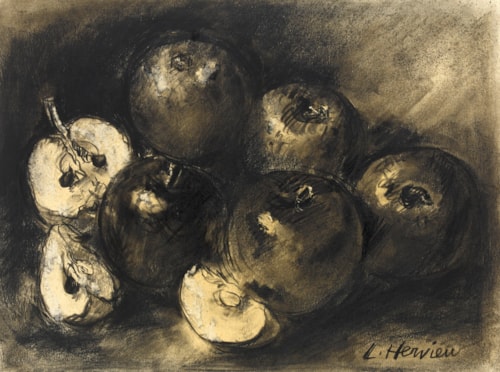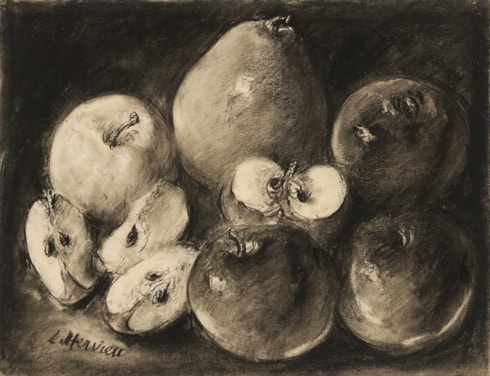
Louise HERVIEU
Alençon 1878 - Versailles 1954
Biography
An extraordinary figure in the artistic and literary circles of Paris in the first half of the 20th century, Louise-Jeanne-Aimée Hervieu took up painting around 1905, having studied with Lucien Simon, André Dauchez and René Ménard. She participated in the Salon des Indépendants in Paris, and in 1910 had a one-woman exhibition at the Galerie Eugène Blot in Paris. After this, however, she abandoned painting at the insistence of her parents, although she continued to make charcoal drawings and pastels - often of female nudes, still lives and interior scenes - as well as lithographs. She soon came to the attention of the critic Félix Fénéon, who in 1917 organized the first of several exhibitions of her drawings at the Galerie Bernheim-Jeune. Fond of intense chiaroscuro techniques, Hervieu achieved remarkable effects of mood and mystery in her drawings, often rubbing and scratching, with a razor blade, the surface of her drawings to heighten their visual impact. She became friendly with such artists as Félix Vallotton, Pierre Bonnard and Edouard Vuillard, and also provided illustrations for several books, including Charles Baudelaire’s Les fleurs du mal in 1920 and Le spleen de Paris in 1922.
Born with congenital syphilis and always in very poor health, Hervieu was, by her forties, confined to her room and had largely withdrawn from the world. As a result of chronic meningitis, her eyesight gradually deteriorated, and by the early 1920s she had abandoned working in colour. By 1927 she had grown almost completely blind and had stopped drawing altogether; the catalogue of her retrospective exhibition at Bernheim-Jeune that year was prefaced by a statement intended by the artist as a sort of artistic ‘farewell’. She had by then turned to writing, and in 1925 her book L’âme du cirque was published, accompanied by illustrations by Bonnard, Maurice Denis, Picasso, Georges Rouault and André Lhote. In 1936 Hervieu’s novel Sangs won the Prix Fémina; this was followed by Le crime, published in 1937, Le malade vous parle in 1943 and La rose de sang in 1953.



